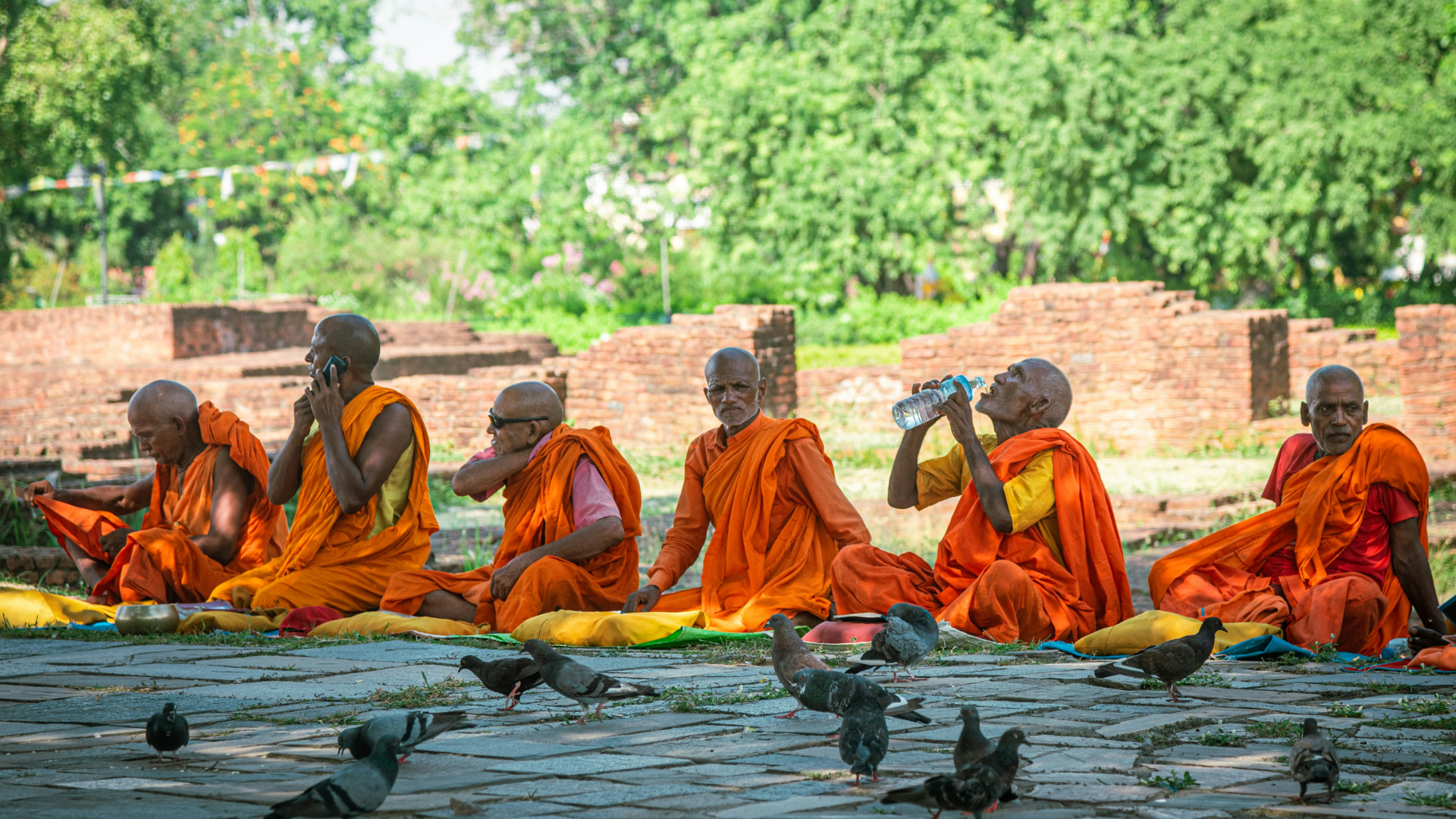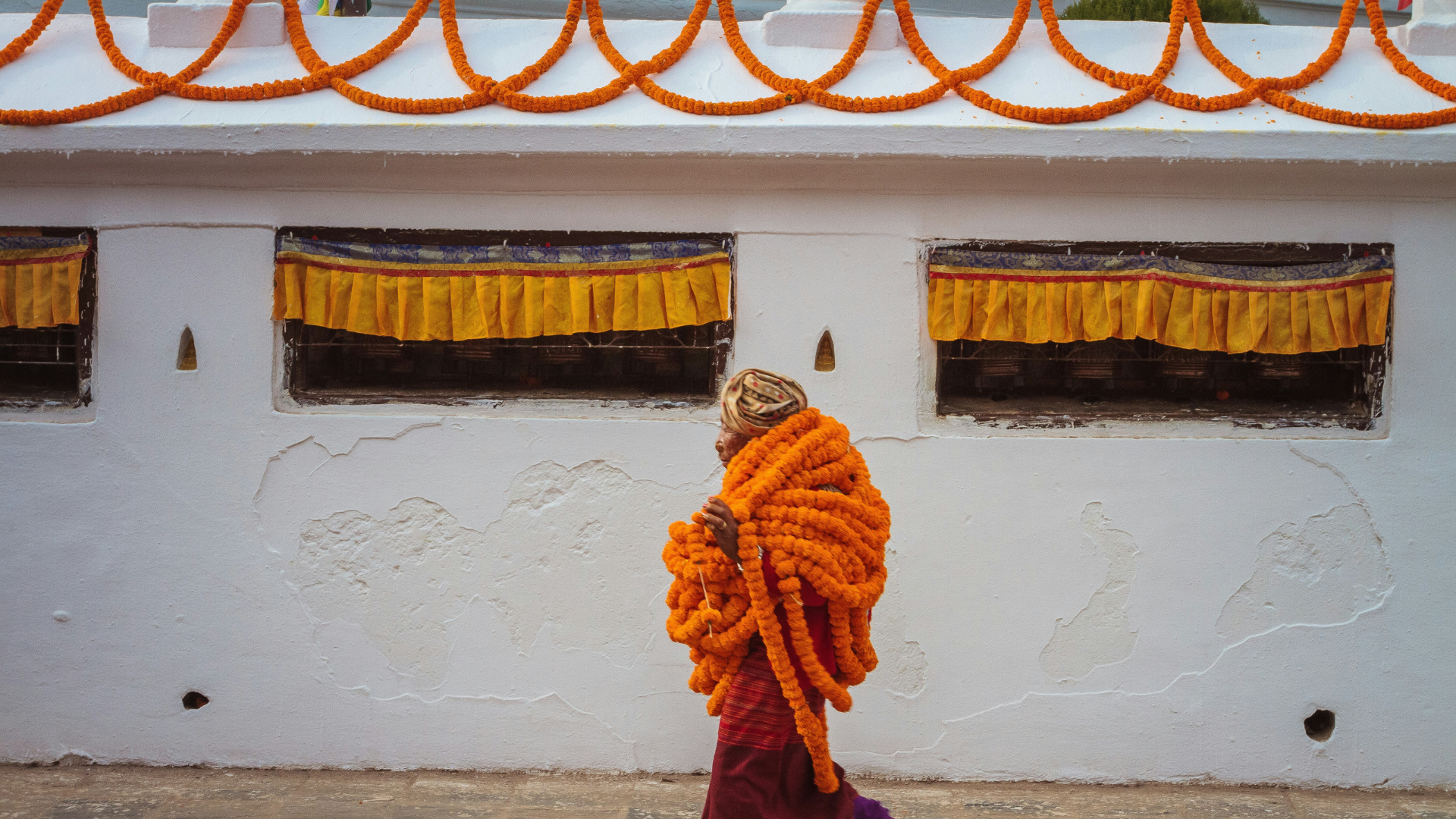The Power of Stillness: Lessons from Nepalese Monks
"The real meditation is how you live your life." — Tulku Urgyen Rinpoche (1919-1996)
Renowned meditation master born in Nepal who taught at Nagi Gompa hermitage near Kathmandu
There are moments in life when the universe aligns in such a way that you are given a rare glimpse into something deeper - something beyond the noise of daily existence. One such moment for me was at Karma Dhubgyu Chokhorling Monastery in Manang, about a 30 minute journey from our retreat venue in Pokhara Nepal, where I received blessings from Nyedon Rinpoche, a revered 75-year-old lama whose life embodies the transformative power of stillness. It was one of the most moving and meaningful experiences of my life.
A Glimpse into a Life of Devotion
I’d come to Nepal to research our upcoming retreat, staying at The Pavilions Himalayas, our base in the valley. The monastery itself is a short drive away - not remote, but worlds apart in spirit. Inside, young monks (some barely six years old) study and laugh in courtyards and there is an atmosphere that is really free and joyful. I can still remember all the cute kittens that were running around waiting to be fed the leftovers after mealtimes. The monastery bears cracks from the 2015 earthquake, but the energy of love and the feeling of peace is undimmed by the damaged walls around them. I was excited to receive blessings from Nyedon Rinpoche, but I wasn’t really sure what to expect.
Nyedon Rinpoche’s journey began at 13 when his parents sent him from his village near the Tibet border to study under the 17th Karmapa in Sikkim. For 25 years, he immersed himself in Buddhist philosophy before undertaking the ultimate test of stillness: 3 years, 3 months and 3 days meditating in a cave, cut off from all human contact.
I’ll say that again - 3 years, 3 months and 3 days meditating in a cave - alone. That blows my mind! If I can sit on my meditation cushion for 10 minutes without feeling distracted, it’s a victory in my messy, inconsistent journey of meditation!
I was so curious about this and found myself asking really silly questions like how did he eat? Where did he sleep? Rather than deep, profound, thought provoking questions that I had hoped would spring to mind! But if you’re interested…food and water was left outside the cave twice a day but he wouldn’t have contact with the person who left it there. He slept on a simple mattress with a thin blanket. Not uncomfortable, but certainly not luxury!
The Blessing Ceremony: A Thread of
Connection
Anyway, during our afternoon blessing, I presented Rinpoche with an offering—a platter of local fruits and marigold petals arranged on brass. At the end of the session he ate an apple which I only mention because I remember thinking how ordinary that seemed after such a profound experience. But that’s the thing - monks are human too, they don’t have superpowers - they laugh and eat apples and struggle just like you and I - but it’s how they view life that’s so different I guess.
I sat opposite and listened with legs crossed and hands in prayer mudra. As Rinpoche chanted from ancient scriptures, his voice like gravel and wind, something unexpected happened to me: tears started to stream down my face. Not from sadness, but from a sudden feeling of release - as if some clenched fist inside my chest (that I didn’t even know was there) had let go.
At the ceremony’s close, Rinpoche tied a blessed thread around my wrist—red, green, yellow and blue strands all twisted together. He lit the ends with a butter lamp, sealing the blessing with smoke. "Smile more," he said, pressing his forehead to mine. "Don’t worry so much." I have never taken it off and hopefully I won’t ever need to. You’ll see it when you meet me in Nepal and be with me when we receive a new one together!
Why This Matters for Our Retreat
This autumn, we will return to the monastery with our retreat group for a similar blessing with Rinpoche. Here’s what we’ll experience:
The Living Monastery: Not a museum, but a vibrant place where novices kick soccer balls between prayers and earthquake cracks whisper of resilience, fun and love.
The Thread Ritual: Each guest will receive their own multicolored thread—a tactile reminder to embrace both joy and impermanence. It really does feel deeply meaningful to wear it long after the blessing is over.
The Space Between: Like Rinpoche’s cave, we’ll carve out moments of pure stillness during our retreat, whether in meditation or while sipping tea under the Himalayan skies.
3 Cave-Inspired Practices to Try Now
The Mini-Retreat: Spend 3 minutes each morning in silence (no phone, no plans). Just 3 minutes - I’m not saying you have to be like Rinpoche - but just give 3 mins a try.
The "To-Don’t" List Don’t obsess over what others say or think about you - who cares anyway?!
Smile More: When stress arises, physically smile - even if forced - to trigger neurochemical shifts. It feels silly but it does work!
The Real Gift
Rinpoche’s thread still clings to my wrist and I love it: Stillness isn’t about escape; it’s about presence. In a world that glorifies busyness, the bravest act might be to sit in a cracked monastery courtyard, listening to monks laugh, petting the cute kittens and let the tears come when they will.
I honestly can’t wait to share this experience with you and I urge you to take a few moments of stillness for yourself today and just see how it feels.
Stillness isn’t escape - it’s coming home to yourself. Imagine experiencing this in the Himalayas, where monks laugh and kittens nap between prayers.
P.S. Try Rinpoche’s ‘3-minute morning silence’ today. When you do, notice what comes up - then DM me @BigLoveRetreats and tell me: did it crack you open too? (It still does for me, every damn time.)




